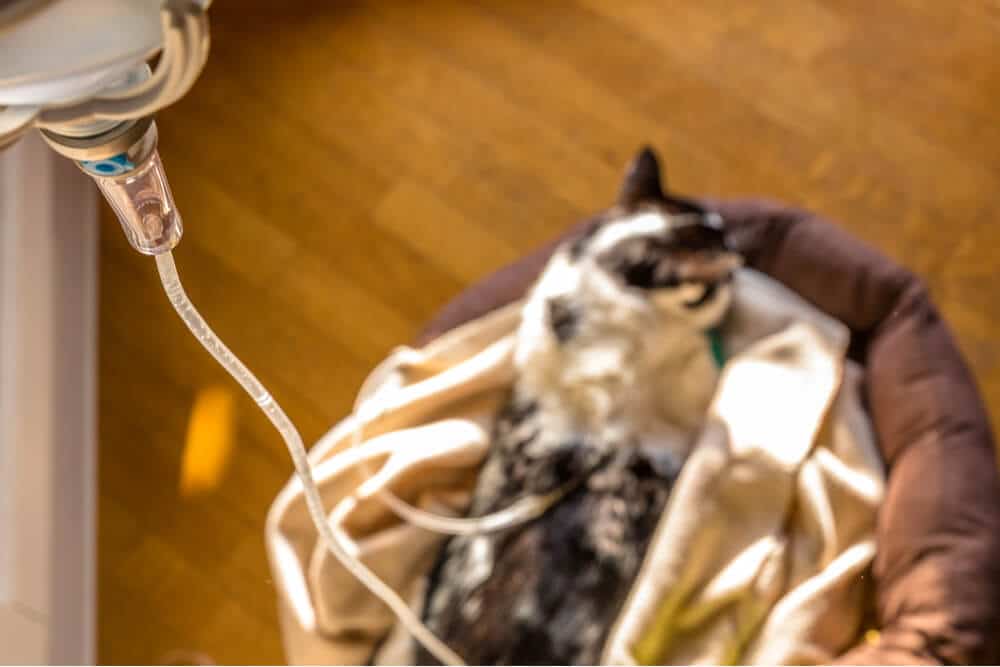
Subcutaneous seals in cats: types, causes and treatment
Perhaps the bump that the owner found on his pet when he scratched her behind the ear is completely harmless. But for any tumors under the skin of a cat, you should consult with a veterinarian. After all, there is always the possibility of infections, inflammatory foci and cancerous tumors. All of these conditions require veterinary intervention.
Why do seals appear under the skin of a cat and what should be done?
Contents
How do subcutaneous bumps form in cats?
All bumps under the skin of a cat are divided into four categories – traumatic, parasitic, inflammatory and malignant:
- Traumatic seals can form if the animal receives a stab wound.
- Parasitic seals. Parasites such as fleas and mites can lead to the formation of lumps on the skin of a cat.
- Inflammatory growths that can lead to scarring, ulcers, and abscesses.
- Malignant tumors that occur when a cat’s cells lose their ability to self-regulate.
Common types of subcutaneous seals in cats
In these four categories, the following most common types of neoplasms occur:
- Abscesses. An abscess is a fluid-filled lump containing, among other things, inflamed tissue. They are formed as a result of infections that enter the cat’s body through a puncture of the skin, and most often appear on the paws after bites and scratches.
- Cysts. These are growths that protrude above the surface of the skin, caused by blockage of the hair follicle or skin pore, or a bacterial infection of the skin.
- Abscess of the anal glands. If a secret accumulates in the anal glands of the animal and its evacuation is disturbed, an infection can get there, and an abscess forms at the site of the gland.
- Eosinophilic granuloma. These bright red or pink swollen areas of inflammation are quite common in cats. Some species sometimes affect the oral cavity, forming a characteristic pattern, which is called “rodent ulcer”.
- Cancer. Skin cancer is not as common in cats as it is in dogs, but if the nature of the tumor is unclear, it should definitely be removed and sent for analysis.
If the cause of the lump is cancer, the location where it occurs will depend on the type of tumor. A lump on the cat’s neck or head may result from a mastocytoma. But if a cat has breast cancer, lumps will appear on the lower body.
How Veterinary Specialists Diagnose Neoplasms and Bumps on the Skin of a Cat
In many cases, a cat’s veterinarian will be able to diagnose lumps and bumps through a thorough examination. However, in some cases, to determine the nature of the formation, a specialist may take a tissue sample for analysis, in particular:
- Skin scraping or smear-imprint. These analyzes involve taking a sample from the surface of the seal and determining its origin using a microscope.
- Fine needle aspiration. During this procedure, a needle is inserted into the seal to extract the cells and further study them.
- Biopsy. This is a minor surgical operation in which a tissue sample is taken for examination by a laboratory diagnostic specialist.
The cat has a bump: how to treat
In most cases, veterinarians will be able to confirm the cause of a lump or mass in a cat based on its response to treatment. Treatment depends entirely on the diagnosis: if the bump is the result of an injury, a specialist will treat the wound and most likely prescribe antibiotics. Indurations caused by parasites should be treated with topical or systemic parasiticides.
If the lump is the result of an inflammatory or allergic disease, topical or systemic anti-inflammatory drugs should help the cat. If a pet is diagnosed with a cancerous tumor, treatment will depend on its assessment by a specialist. Your veterinarian may recommend surgery, chemotherapy, radiation therapy, or no action.
Nutrition can also play an important role in treatment. If the cause is allergies or certain types of skin cancer, changing your cat’s diet may help. In any case, you should first discuss this issue with your veterinarian.
If, while stroking a pet, the owner feels a seal, he may experience anxiety. But the best thing you can do for your beloved cat is to remain calm and contact your veterinarian immediately.
See also:
Your Cat Has Cancer: Everything You Need to Know About Cat Cancer The Most Common Cat Diseases Skin Diseases in Cats Sensitive Skin and Dermatitis in Cats





